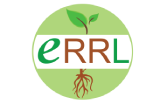OECD 208 :
Terrestrial Plant Test :
Seedling Emergence and Growth Assessment
It is a comprehensive method to evaluate the effects of a test substance on the early stages of higher plant development. The test involves exposing seeds to the test substance applied either to the soil surface or directly into the soil.

Methodology :
Seeds are carefully placed in contact with soil treated with the test substance and monitored for effects after a typical period of 21 – 45 days, beginning from 50% emergence of seedlings in the control group. The test measures various endpoints, including visual assessment of seedling emergence, biomass measurements, shoot height, and any visible detrimental effects on different parts of the plant.
Flexible Testing Approach :
The test can be conducted to establish a dose-response curve or as a limit test at a single concentration or rate, based on the study’s objectives. An appropriate statistical analysis is employed to determine the effective concentration (ECx) or effective application rate (ERx) for the most sensitive parameter(s) of interest. Additionally, the test can calculate the no observed effect concentration (NOEC) and lowest observed effect concentration (LOEC) to provide further insights.
Importance :
This test guideline is essential for assessing the potential effects of a substance on the early growth stages of terrestrial plants. By understanding the impact of the test substance on seedling emergence and growth, we gain valuable information for environmental risk assessment and soil quality after biodegraded mass is placed in the soil. This test provides critical data for regulatory compliance, environmental protection, and informed decision-making.
